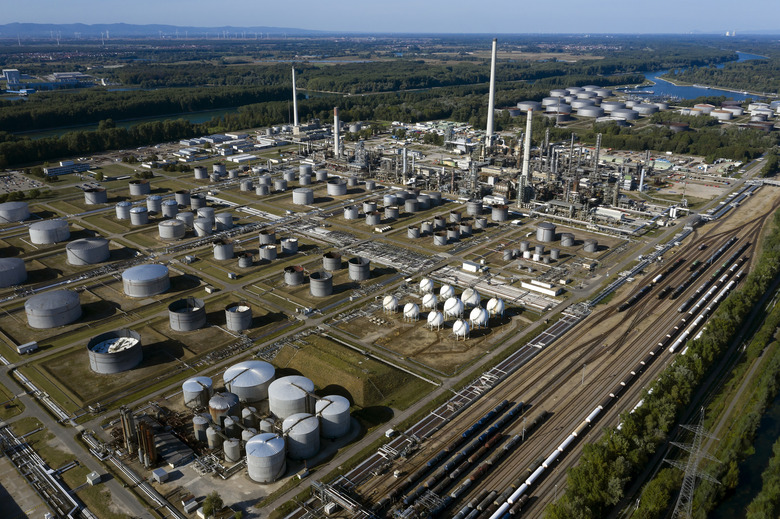What Do Scrubbers Do In Smoke Stacks?
Reduction of Sulfur and Other Particulates
Reduction of Sulfur and Other Particulates
Given the known health hazards from factory smokestack emissions, particularly those of coal-burning electric power plants, it is highly desirable to reduce the emissions at their source. One proven way of doing this is to install scrubbers in the emission system. The technology of scrubbers, which can remove a very large proportion of the sulfur dioxide from smokestack emissions, is constantly being refined. While one might imagine that scrubbers would be installed directly inside a smokestack, they can in fact be added at many points in or around it. Some scrubber installations require the addition of an entire building or complex to a coal plant.
A Chemical Reaction Converts the Sulfur
A Chemical Reaction Converts the Sulfur
When soft coal or oil are ignited and burned, sulfur dioxide is produced. The main method of removing sulfur dioxide from emissions is to put the "flue gas" from industrial plants through a tank containing a sprayed mixture of powdered limestone and water. The resulting chemical reaction produces a synthetic form of the mineral gypsum, which can be adapted for use in concrete or drywall. This can be done in a few different ways. In a "wet scrubber," the untreated exhaust is sent through a spray chamber where fine water droplets knock down the harmful particulates. The water at the bottom of the chamber enters a miniature water treatment plant where the sediments are removed before the water is recycled to be used again. "Dry scrubbers" use a granulated solid material or electrostatic technology to intercept the particulates, creating a dry waste product. These are not as common as wet scrubbers because of their higher costs of installation. In either case, before the flue gas reaches the scrubber, it may first pass through a filter that consists of some type of cloth bag to catch large particles. A second filter may be installed to catch very small particles after the flue gas leaves the scrubber.
Environmental Concerns Persist, Even With Scrubbers
Environmental Concerns Persist, Even With Scrubbers
While the idea of recycling waste from scrubbers into reusable synthetic gypsum is appealing, this technique has not been universally adopted. Much of the waste extracted from flue gas by scrubbers is dumped back into the coal mines from which it originally came. Great environmental damage can be done if the highly poisonous sludge comes into contact with ground water. The tremendously concentrated wastes dissolve easily in water, including wells and aquifers for drinking water.
Cite This Article
MLA
Ryan, David B.. "What Do Scrubbers Do In Smoke Stacks?" sciencing.com, https://www.sciencing.com/do-scrubbers-do-smoke-stacks-5004709/. 22 November 2019.
APA
Ryan, David B.. (2019, November 22). What Do Scrubbers Do In Smoke Stacks?. sciencing.com. Retrieved from https://www.sciencing.com/do-scrubbers-do-smoke-stacks-5004709/
Chicago
Ryan, David B.. What Do Scrubbers Do In Smoke Stacks? last modified March 24, 2022. https://www.sciencing.com/do-scrubbers-do-smoke-stacks-5004709/
